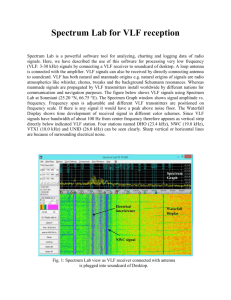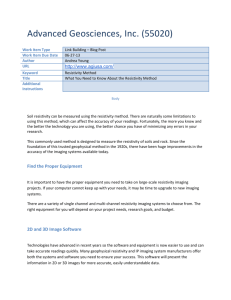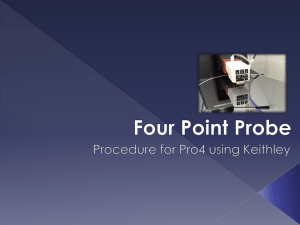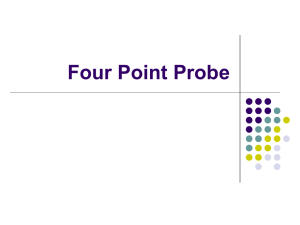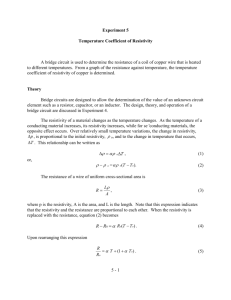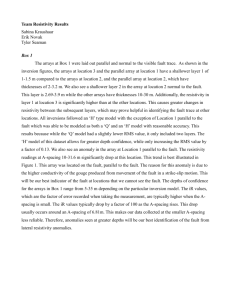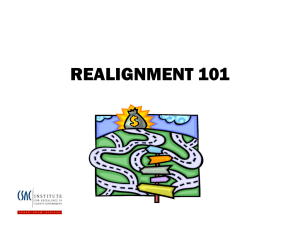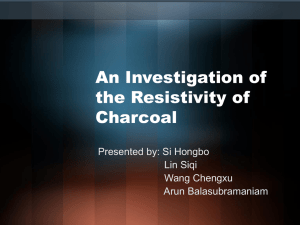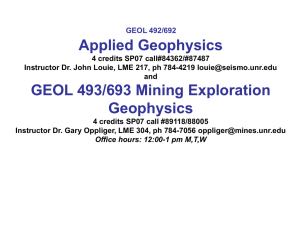A Geophysical Study: Desert Hot Springs, CA
advertisement
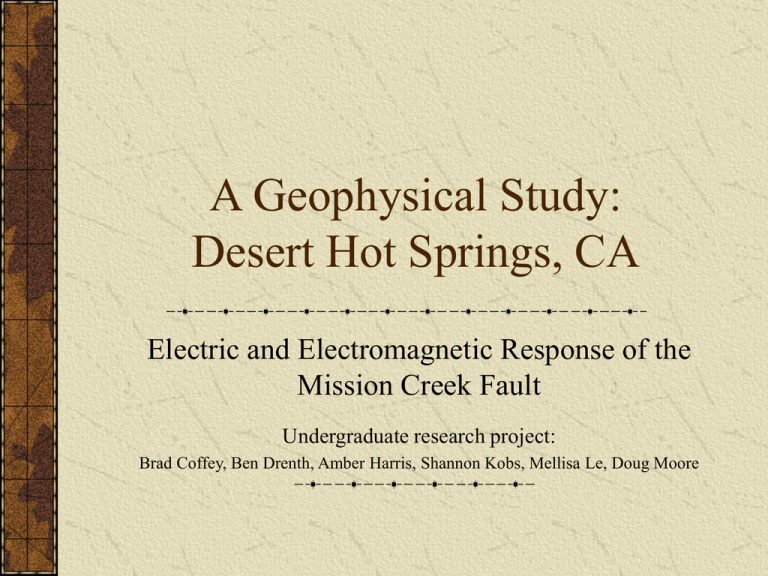
A Geophysical Study: Desert Hot Springs, CA Electric and Electromagnetic Response of the Mission Creek Fault Undergraduate research project: Brad Coffey, Ben Drenth, Amber Harris, Shannon Kobs, Mellisa Le, Doug Moore Introduction Purpose Location Geology Methods Purpose Use of electrical and electromagnetic geophysical methods to assess the properties of the Mission Creek Fault and determine the usefulness of these methods in similar areas. Location Aerial Photo Geology Geophysical Methods Electrical Resistivity Electromagnetic Very Low Frequency (VLF) VLF – resistivity (VLF-R) Horizontal Loop Electromagnetics (HLEM) Resistivity Previous Work Location Methods Results Interpretation Multielectrode Resistivity 2002 Locations of soundings taken by Chad Lukkarila and Dr. Diehl Resistivity methods Schlumberger Arrays 250 meter maximum spacing Originally interpreted using Resist3 New interpretation using Zhody program Resistivity Cross-section Line Zhody Layered Model Results N-NE S-SW Multielectrode Resistivity Electromagnetics Very Low Frequency (VLF) VLF-Resistivity Horizontal Loop EM (HLEM) VLF and VLF-R S R P Ez Ex Hy VLF VLF tilt-angle response Horizontal Conductor VLF VLF-R VLF-R Field Data 80 70 500 60 400 50 300 40 30 200 20 100 10 0 0 40 80 120 160 200 240 280 Phase Angle (Degrees) Apparent Resistivity (ohm*m) 600 apparent resistivity (ohm*m) phase angle (degrees) 0 320 Location (m) N-NE S-SW HLEM HLEM Field Data HLEM Models HLEM - Line 2 Layer 1 & 2 Emixmm Model Depths Distance (m) 250 0 300 350 400 450 500 550 600 -20 -40 -80 -100 -120 HLEM - Line 3 Layer 1 Emixmm Model Depths -140 Distance (m) -160 0 -20 -40 -60 Depth (m) Depth (m) -60 -80 -100 -120 -140 -160 0 50 100 150 200 250 300 350 400 450 500 550 600 Model Summary N-NE S-SW Resistive Overburden Water Table Fault Plane 30-50 m Water Table Conclusions Successful identification of fault location through electrical and electromagnetic methods Future Work: Resistive or conductive fault gouge Interaction of fault and groundwater Acknowledgements Thanks to Dr. Alex Mayer for his informative talk on the hydrogeology of the Desert Hot Springs Area. A special thanks to Dr. Young for arranging the field trip, leading us in the interpretation of the data, and feeding us at that awesome steak place. References ________, 1988. Emix-mm User’s Manual, Interpex Limited, Golden, Colorado, USA. Karous, M., and S. E. Hjelt (1983) Linear Filtering of VLF Dip-Angle measurements, Geophysical Prospecting, 31: 782-794. Lukkarila, Chad R., 1999, Refinement of a groundwater flow model: Upper Coachella Valley, Riverside County, California, MS Thesis, Department of Geological Engineering and Sciences, Michigan Technological University McNeil, J.D. 1988 “Advances in Electromagnetic Methods for Groundwater Studies.” SAGEEP 1988, 252-348. Proctor, R. J. 1968. Geology of the Desert Hot Springs-Upper Coachella Valley Area, California. Special Report 94 California Division of Mines and Geology, San Fransisco, 50 p. Reynolds, J. M. 1997. An Introduction to Applied and Environmental Geophysics. John Wiley & Sons, Inc. New York. Questions? Photos – Nap Time Photos – Fun Time Photos – Miscellaneous Photos - Miscellaneous Photos – Miscellaneous

